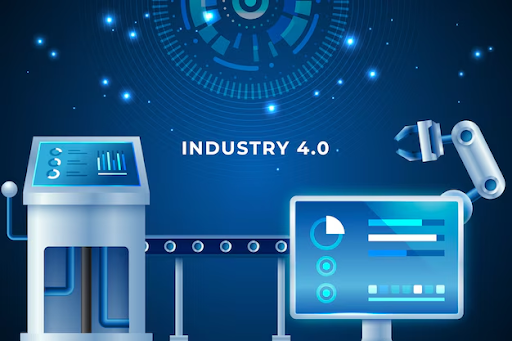Have you ever wondered how a smartphone can pack hundreds of tiny components into such a compact device? That is the result of a complex manufacturing process that requires absolute precision. To solve this problem, manufacturers have turned to automation - technology that helps optimize every step of the production process, from raw materials to the final product. However, the path to factory digitization is not smooth at all. So what are the solutions to help businesses overcome challenges and maximize the benefits of automation?
This article will explain the benefits of automation for the manufacturing industry and what its future will look like.
1. What is automation and the types of automation
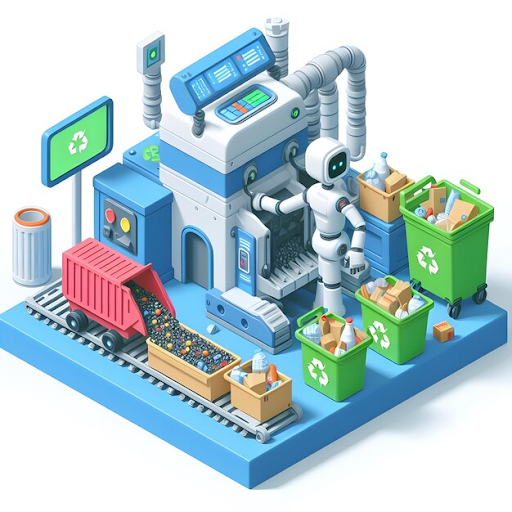
Automation is the process of using machinery, equipment, and information technology systems to replace or assist humans in performing tasks, especially repetitive tasks that require high precision. The goal of automation is to increase productivity, product quality, minimize errors, and reduce production costs.
Types of automation:
Partial automation: Only some stages in the production process are automated, while the rest still rely on manual labor.
Fully automated: The entire production process is carried out by machines and automated systems, without human intervention.
2. Core technologies supporting automation

Some core technologies will support the automation process such as:
- Industrial robots: These are robotic arms capable of performing complex tasks such as welding, painting, assembling, packaging, etc., with high precision and speed.
- Artificial Intelligence (AI): Allows machines to learn, reason, and make decisions like humans. AI is applied in automation to optimize production processes, detect errors, and predict demand.
- Internet of Things (IoT): Connecting devices, machinery, and systems together through the internet, allowing for data collection and analysis to control and optimize the production process.
- Big Data: Collecting, storing, and analyzing large amounts of data to identify trends, relationships, and make business decisions.
- Machine Learning: A branch of AI that allows machines to learn from data and improve performance over time.
3. The application of automation in practice
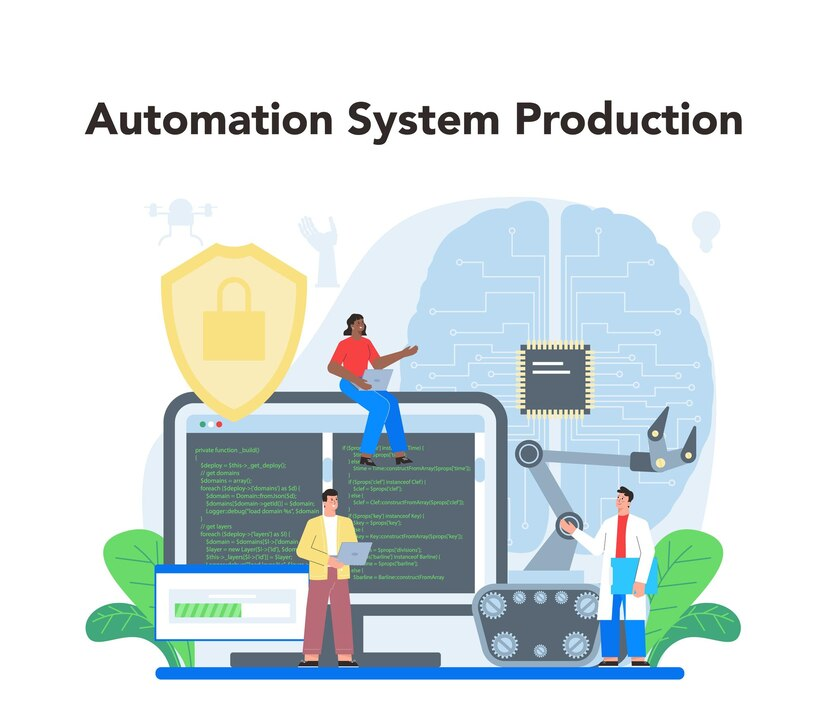
Automation has been and is being widely applied in many industries such as:
3.1. Industrial robots
Industrial robots are widely used in assembly lines, welding, painting, packaging, and product quality inspection. They have the ability to perform tasks more accurately and quickly than humans, helping to reduce production time and increase efficiency.
For example, in the automotive industry, robots are used to weld car frame parts with high precision, minimizing errors and ensuring worker safety.
3.2. IoT System (Internet of Things)
IoT is becoming the foundation for smart factories, where devices, sensors, and machinery are interconnected through the internet. Thanks to this, businesses can monitor and manage production remotely, while also analyzing data to optimize processes.
3.3. 3D Printing Technology
3D allows for the rapid and cost-effective production of complex components or prototype products. This is the ideal solution for product customization and meeting the diverse needs of customers.
3.4. Artificial intelligence (AI)
AI plays an important role in analyzing big data, predicting production trends, and optimizing operations. For example, AI algorithms can predict technical faults in machinery before they occur, helping to minimize downtime.
3.5. Robotic Process Automation (RPA) (RPA)
RPA is used to automate repetitive tasks in the office, such as order management, data entry, and inventory tracking. This helps businesses save time and resources.
4. The benefits of automation in the manufacturing industry
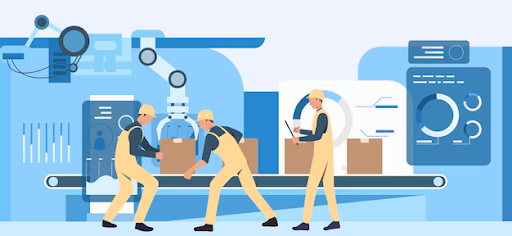
Automation has become an indispensable factor in modern manufacturing, bringing numerous significant benefits. Here are some key benefits:
4.1. Increase productivity and production efficiency
With the ability to operate continuously and tirelessly, automated machinery has truly become an indispensable "worker" in modern factories. Thanks to this, product output not only increases significantly but also ensures stable and uniform quality. The transition between production stages occurs smoothly and quickly, minimizing machine downtime and contributing to increased production efficiency.
In addition, automation also brings the opportunity to optimize each step in the production process. Thanks to data analysis and the application of intelligent algorithms, unnecessary or wasteful steps will be eliminated, replaced by efficient and cost-effective solutions. This not only helps businesses reduce production costs but also enhances their competitiveness in the market.
4.2. Improving product quality
Automation not only enhances product quality but also creates a revolution in quality control. Automated quality control systems, with near-absolute precision, have the ability to detect and immediately address even the smallest deviations in the production process. Thanks to this, the final products always meet the highest quality standards, while significantly reducing the scrap rate and production costs.
4.3. Reduce production costs
Replacing manual labor with intelligent automation systems is not merely about reducing labor costs but also a significant step towards enhancing production efficiency and productivity. Repetitive tasks that are prone to causing boredom and pose many risks to workers are now assigned to machines. Thanks to this, businesses not only reduce production errors and improve product quality but also significantly shorten the production cycle time, quickly responding to the ever-changing market demand. In addition, automation also helps optimize resource usage, minimize waste, and enhance the competitiveness of the business.
4.4. Enhancing flexibility
In addition to increasing productivity and manufacturing flexibility, automation also plays a crucial role in protecting the health and safety of workers, minimizing hazardous jobs, and reducing the risk of workplace accidents. For example, instead of having to work in hazardous environments like chemical factories, workers can now monitor the production process remotely, minimizing exposure to toxic substances.
4.5. Occupational safety
With automation, heavy and dangerous tasks such as lifting heavy objects and working in hazardous environments will be handled by machines. This not only significantly reduces the risk of workplace accidents but also creates a safe and healthy working environment, protecting the health of workers. A specific example in the manufacturing industry is that automation has revolutionized the automobile production sector. Precision welding robots have replaced workers performing this task, significantly reducing the risk of burns and accidents related to electric sparks. Thanks to that, the working environment has become safer, improving the quality of life for workers and contributing to the overall productivity of the entire production line.
4.6. Collecting and analyzing data
Thanks to the ability to quickly and accurately collect and analyze production data, automation has become an indispensable tool that helps businesses optimize every step in the production process. Not only does automation stop at monitoring and evaluating the efficiency of each stage, but it also brings the ability to accurately forecast market demand. Thanks to that, businesses can plan production flexibly, quickly responding to market fluctuations. Optimizing resources, from raw materials to labor, not only reduces costs but also enhances labor productivity. Finally, by making data-driven business decisions, companies not only enhance their competitiveness in the market but also create increasingly high-quality products and services that better meet customer needs.
5. The importance of automation in the industrial revolution 4.0
Automation is not just a part, but also the main driving force behind the Industrial Revolution. 4.0. By digitizing and automating all processes, businesses not only enhance productivity but also open up entirely new production possibilities. From smart factories, where machines automatically learn and adapt, to creating personalized products based on customer data, automation is reshaping the future of all industries. The application of technology not only helps businesses lead the competitive race but also creates a smart, sustainable, and future-oriented economy.
6. The challenge of automation in production
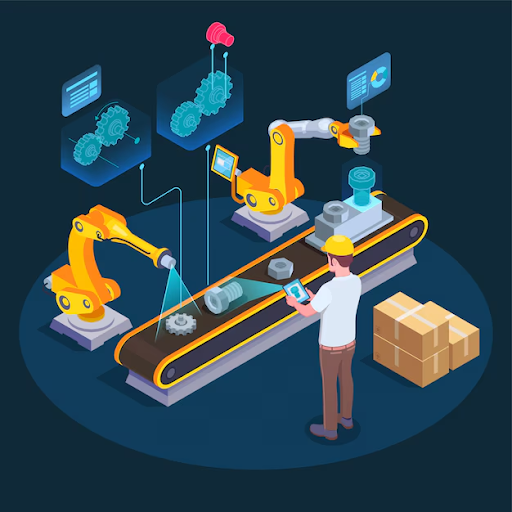
6.1. High investment costs
High investment costs are one of the biggest barriers when businesses want to implement automation in production. The procurement of machinery, software, systems, and the costs associated with installation and maintenance can consume a significant portion of the budget. Automation equipment often uses advanced technology, requiring high production and research costs. Connecting automation devices to existing systems requires multiple steps and costs. Using automation machinery and equipment requires high expertise, so training employees to operate and maintain the new system is also costly.
6.2. Demands significant tech investment.
Automation equipment often uses advanced technology, requiring high production and research costs. Instead of investing in the entire production line, businesses can start with a few simple processes that yield the highest efficiency. Some businesses can outsource automation services to reduce initial investment costs. Although the high investment cost is a challenge, the benefits that automation brings are significant. Businesses need to carefully consider the factors to make appropriate investment decisions. Starting on a small scale, seeking financial support, and optimizing the production process are effective solutions to minimize investment costs.
6.3. Information security
The convenience that automation brings comes with potential cybersecurity risks. Automation systems, which are treasure troves containing large amounts of sensitive data, are increasingly becoming targets for hackers. A successful attack can cause serious consequences, ranging from production disruptions and business paralysis to the theft of personal and financial information, resulting in immeasurable losses.
6.4. Difficulties in integrating different systems
Modern automation systems are often a complex assembly of various devices from different manufacturers, creating significant challenges in connectivity and synchronization. The diversity of communication protocols of each device requires complex integration solutions, increasing the complexity of the system. In addition, maintaining and upgrading the system requires a team of specialized and experienced technicians, as any malfunction can disrupt the entire production process. Especially when producing a variety of products, the flexible adjustment of the system to meet the requirements of each type of product is a challenging problem.
6.5. Occupational safety
In a modern automated environment, occupational safety is always a top concern. Failure to comply with safety standards can lead to unforeseen consequences, ranging from minor injuries to serious accidents. To ensure that production activities are conducted safely and efficiently, the operation and maintenance of automation equipment must be carried out professionally and in strict compliance with regulations.
7. The future of automation in manufacturing
7.1. The development of smart factories (Smart Factory)
Smart factories will be the next step in manufacturing automation, where all activities are digitized and optimized. With the support of AI, IoT, and blockchain, businesses can manage production processes in real-time and make decisions based on accurate data.With the support of AI, IoT, and blockchain, businesses can manage production processes in real-time and make decisions based on accurate data.
7.2. 5G Technology and Its Impact on Automation
5G technology promises to improve the speed and stability of internet connections, allowing automation systems to operate more efficiently. This is especially important for applications that require quick response times, such as robots and autonomous vehicles.
7.3. Personalization of production
Thanks to automation, businesses can easily meet the personalization needs of customers. Flexible production lines will help businesses manufacture customized products without significantly increasing costs.
8. Conclusion
Automation is reshaping the future of manufacturing. By leveraging advanced technologies, businesses can enhance their competitive edge, scale up production, and meet the ever-increasing market demand. However, the process of transitioning to automation also comes with significant challenges. To succeed, businesses need to develop a comprehensive strategy, including a thorough assessment of benefits and risks, investment in technology and human resources, and the establishment of a corporate culture ready to embrace innovation.
